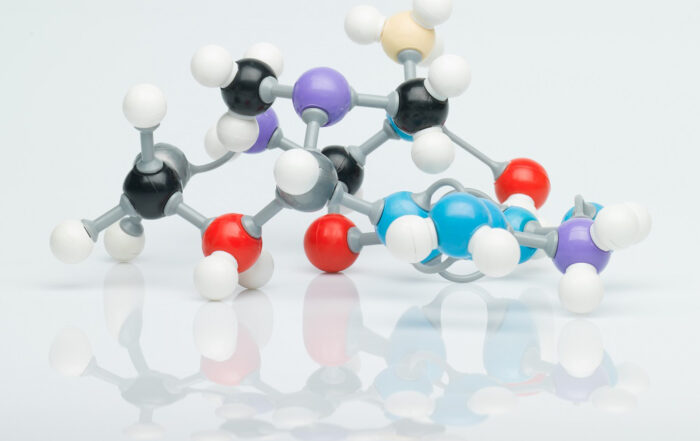Pharmacies
History
The earliest known compilation of medicinal substances was the Sushruta Samhita, an Indian Ayurvedic treatise attributed to Sushruta in the 6th century BC. However, the earliest text as preserved dates to the 3rd or 4th century AD.
Many Sumerian (4th millennium BC – early 2nd millennium BC) cuneiform clay tablets record prescriptions for medicine.[8]
Ancient Egyptian pharmacological knowledge was recorded in various papyri such as the Ebers Papyrus of 1550 BC, and the Edwin Smith Papyrus of the 16th century BC.
Dioscorides, De Materia Medica, Byzantium, 15th century
In Ancient Greece, Diocles of Carystus (4th century BC) was one of several men studying the medicinal properties of plants. He wrote several treatises on the topic.[9] The Greek physician Pedanius Dioscorides is famous for writing a five-volume book in his native Greek Περί ύλης ιατρικής in the 1st century AD. The Latin translation De Materia Medica (Concerning medical substances) was used as a basis for many medieval texts and was built upon by many middle eastern scientists during the Islamic Golden Age, themselves deriving their knowledge from earlier Greek Byzantine medicine Byzantine Medicine.[10]
Pharmacy in China dates at least to the earliest known Chinese manual, the Shennong Bencao Jing (The Divine Farmer’s Herb-Root Classic), dating back to the 1st century AD. It was compiled during the Han dynasty and was attributed to the mythical Shennong. Earlier literature included lists of prescriptions for specific ailments, exemplified by a manuscript “Recipes for 52 Ailments”, found in the Mawangdui, sealed in 168 BC.
In Japan, at the end of the Asuka period (538–710) and the early Nara period (710–794), the men who fulfilled roles similar to those of modern pharmacists were highly respected. The place of pharmacists in society was expressly defined in the Taihō Code (701) and re-stated in the Yōrō Code (718). Ranked positions in the pre-Heian Imperial court were established; and this organizational structure remained largely intact until the Meiji Restoration (1868). In this highly stable hierarchy, the pharmacists—and even pharmacist assistants—were assigned status superior to all others in health-related fields such as physicians and acupuncturists. In the Imperial household, the pharmacist was even ranked above the two personal physicians of the Emperor.[11]
There is a stone sign for a pharmacy shop with a tripod, a mortar, and a pestle opposite one for a doctor in the Arcadian Way in Ephesus near Kusadasi in Turkey.[12] The current Ephesus dates back to 400 BC and was the site of the Temple of Artemis, one of the seven wonders of the world.
In Baghdad the first pharmacies, or drug stores, were established in 754,[13] under the Abbasid Caliphate during the Islamic Golden Age. By the 9th century, these pharmacies were state-regulated.[14][unreliable source?]
The advances made in the Middle East in botany and chemistry led medicine in medieval Islam substantially to develop pharmacology. Muhammad ibn Zakarīya Rāzi (Rhazes) (865–915), for instance, acted to promote the medical uses of chemical compounds. Abu al-Qasim al-Zahrawi (Abulcasis) (936–1013) pioneered the preparation of medicines by sublimation and distillation. His Liber servitoris is of particular interest, as it provides the reader with recipes and explains how to prepare the ‘simples’ from which were compounded the complex drugs then generally used. Sabur Ibn Sahl (d 869), was, however, the first physician to record his findings in a pharmacopoeia, describing a large variety of drugs and remedies for ailments. Al-Biruni (973–1050) wrote one of the most valuable Islamic works on pharmacology, entitled Kitab al-Saydalah (The Book of Drugs), in which he detailed the properties of drugs and outlined the role of pharmacy and the functions and duties of the pharmacist. Avicenna, too, described no less than 700 preparations, their properties, modes of action, and their indications. He devoted in fact a whole volume to simple drugs in The Canon of Medicine. Of great impact were also the works by al-Maridini of Baghdad and Cairo, and Ibn al-Wafid (1008–1074), both of which were printed in Latin more than fifty times, appearing as De Medicinis universalibus et particularibus by ‘Mesue‘ the younger, and the Medicamentis simplicibus by ‘Abenguefit‘. Peter of Abano (1250–1316) translated and added a supplement to the work of al-Maridini under the title De Veneris. Al-Muwaffaq’s contributions in the field are also pioneering. Living in the 10th century, he wrote The foundations of the true properties of Remedies, amongst others describing arsenious oxide, and being acquainted with silicic acid. He made clear distinction between sodium carbonate and potassium carbonate, and drew attention to the poisonous nature of copper compounds, especially copper vitriol, and also lead compounds. He also describes the distillation of sea-water for drinking.[15][verification needed]
In Europe, pharmacy-like shops began to appear during the 12th century. In 1240, emperor Frederic II issued a decree by which the physician’s and the apothecary’s professions were separated.[16]
Sign of the Town Hall Pharmacy in Tallinn, operating continuously from at least 1422, showing the Bowl of Hygieia
There are pharmacies in Europe that have been in operation since medieval times. In Florence, Italy, the director of the museum in the former Santa Maria Novella pharmacy says that the pharmacy there dates back to 1221.[17] In Dubrovnik (Croatia), a pharmacy that first opened in 1317 is located inside the Franciscan monastery: it is oldest pharmacy in Europe that is still operating.[18][19] In the Town Hall Square of Tallinn (Estonia), there is a pharmacy dating from at least 1422.[citation needed] The medieval Esteve Pharmacy, located in Llívia, a Catalan enclave close to Puigcerdà, is a museum: the building dates back to the 15th century and the museum keeps albarellos from the 16th and 17th centuries, old prescription books and antique drugs





